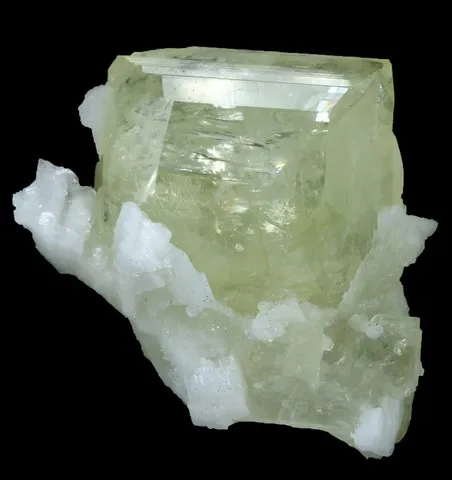AMBLYGONITE
Class : Phosphates, arsenates, vanadates
Subclass : Anhydrous phosphates
Crystal System : Triclinic
Chemistry : LiAlF(PO4)
Rarity : Uncommon
Amblygonite is a fluorinated primary phosphate found in sodolite and lithiniferous pegmatites, sometimes greisens, where it is associated with spodumene, apatite, tourmaline and other lithiniferous minerals. It forms a continuous series with montebrasite, a mineral in which OH predominates over fluorine. Its name comes from the Greek amblus (blunt) and gônia (angle) due to its obtuse cleavage angle. This mineral, transparent to translucent, is most often milky-white to greyish-white in color, rarely yellow-green or mauve-white. Its appearance is similar to that of feldspar, from which it is distinguished by its pearly luster and higher density. Very easily altered from lithium, it gives way to outcrops with various aluminous phosphates (wavellite in particular). Amblygonite most often occurs in masses and large isometric or stubby crystals, embedded in quartz, free crystals being very rare. It is an occasional ore of lithium and it can be used as a gemstone.
Amblygonite in the World
Main photo : Amblygonite from Linópolis, Divino das Laranjeiras, Minas Gerais, Brazil - © Rob Lavinsky
Twinning
Twins are common on {-111} and {110}. Microscopic polysynthetic twins are frequent.
Fakes and treatments
Hardness : 5.5 to 6
Density : 3.1
Fracture : Irregular to sub-conchoidal
Trace : White
TP : Translucent to transparent
RI : 1.557 to 1.613
Birefringence : 0.019 to 0.022
Optical character : Biaxial -
Pleochroism : None
Fluorescence : Yellow
Solubility : Virtually insoluble in acids
Magnetism : None
Radioactivity : None

